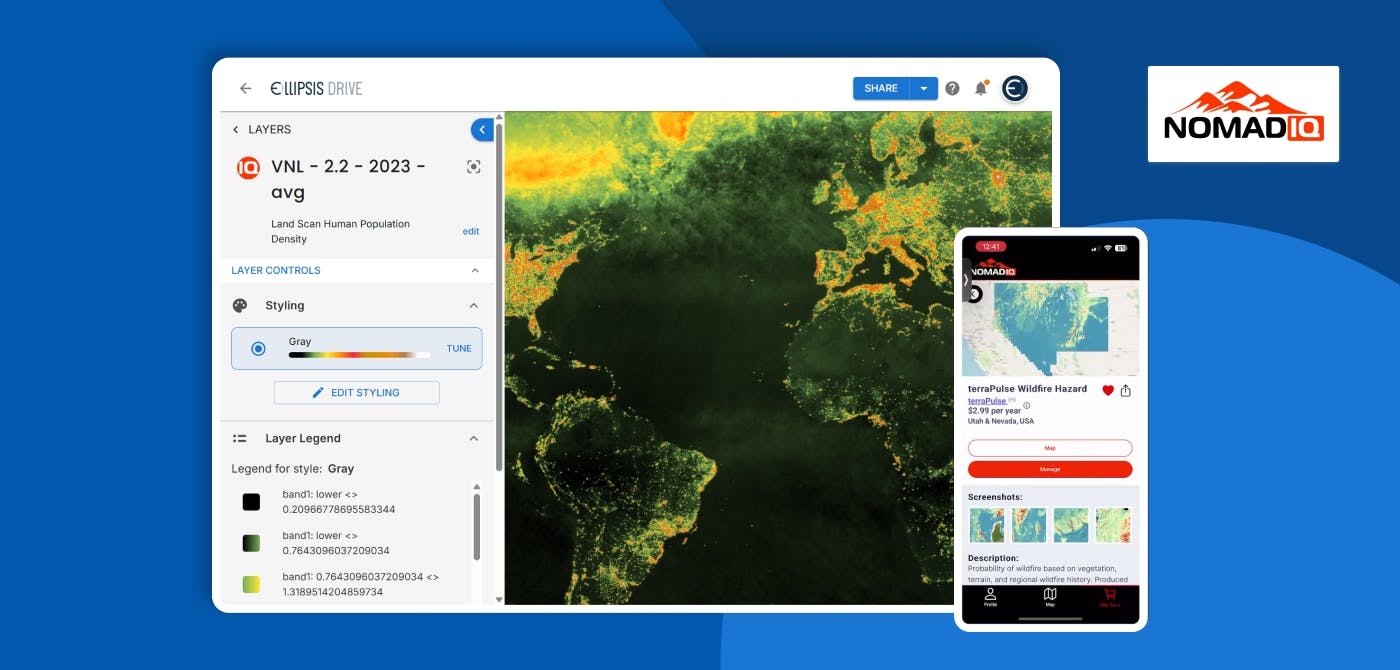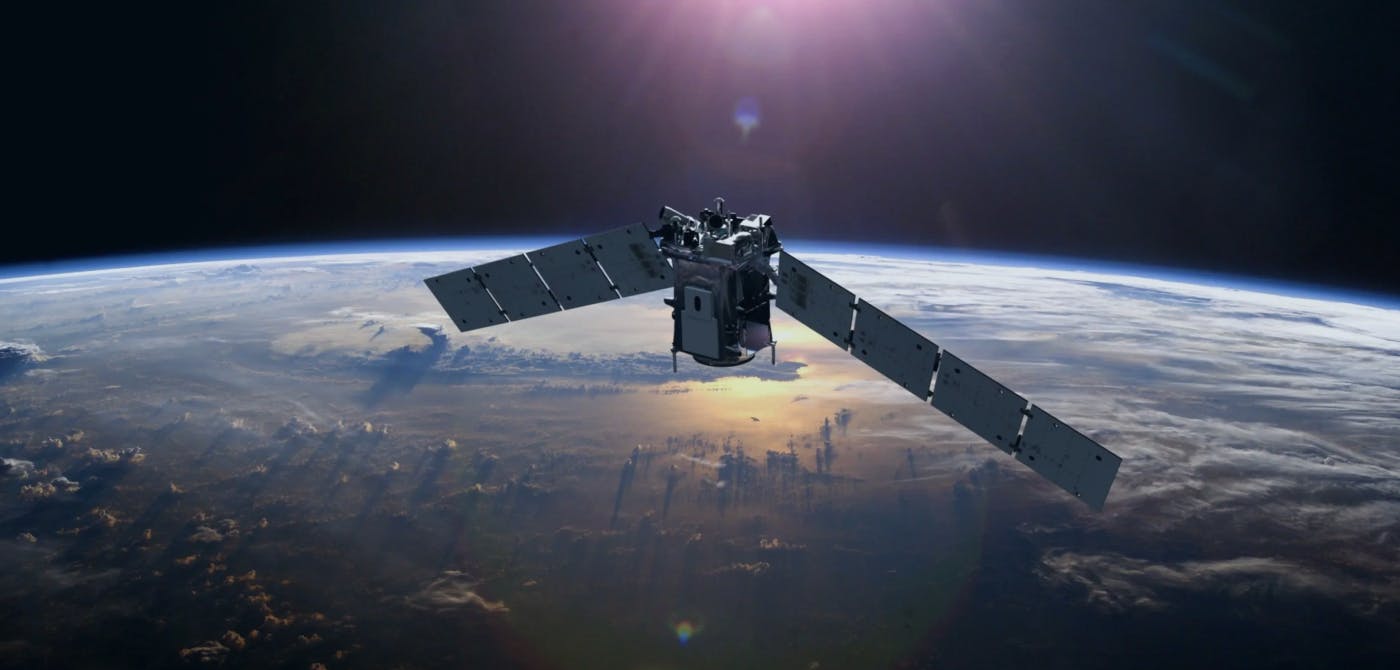Earth Observation
Exploring the New Space ecosystem | Space-as-a-Service

The $4.8 billion Earth Observation industry continues to grow and progress with each passing day. With over 6000+ satellites orbiting our Earth, it is safe to say that space conquest is well and truly underway.
But to be more accurate, we have only really aced the part that involves sending satellites to space and bringing them into orbit. Realistically speaking, is that the end goal? Far from it! Getting satellites into orbit is just the means to acquire the valuable Earth Observation data and apply it to improve humanity.
In this article we’re going to talk about this evolving ‘NewSpace’ ecosystem and the various components that have made it what it is. We are also going to look at the various different types of products and services that have emerged within this ecosystem.
Let’s go!
Contents
Current Scenario
There has been a massive influx in the amount of Earth Observation data being collected. The number of satellites orbiting the Earth has increased and so has the frequency and resolution of data collection. Many new ways of data acquisition (such as SAR, LiDAR) have also contributed to this trend.
Frequent data = accurate data
This has helped create more proactive and forward looking solutions - change analysis dashboards, disaster management tools and precision agriculture to name a few.
It is extremely difficult to own the entire satellite ecosystem from start to finish. That was the old way of working where companies were vertically integrated. While it did provide them with a sense of autonomy, the downside to it was the risk, difficulty and uncertainty that came along with doing everything in house (a narrow scope generally makes things easier).
The upfront cost and resources needed to set up a satellite mission and see it through was sky high. And not to mention the fact that there are no guarantees despite this huge investment.
The initial players that went through this cumbersome journey decided to make life easier for new entrants within this industry by sharing their expertise and experience. This has extended the ‘as-a-Service’ model to Space. Simply put, Space-as-a-Service.
This can be further broken down into the following niche service.
- Satellite-as-a-Service (SataaS)
- Ground Station-as-a-Service (GSaaS)
- Space Data-as-a-Service (SDaaS)
Let’s look at each one of them through a finer eye.
Satellite-as-a-Service
The satellite industry has shifted towards the creation of small satellites in recent times.
Small satellite operators are creating highly specialized technology and miniaturized sensors that is helping them gain a significant advantage in their attempt to monitor space.
These advantages are very much the enablers of the Satellite-as-a-Service model.
The service is facilitating the mission to space. Building a launch vehicle for a small satellite is not the most efficient use of resources. Not to mention the legal, environmental and financial ramifications that come along with a space expedition.
In short, owning a space infrastructure is often not feasible as it requires a great deal of knowledge, dedicated teams and capital expenditure.
This is where this service model kicks in.
Small satellites can easily piggyback larger expeditions and missions and thus help reduce the launch cost and improve their performance.
Experienced organizations help small and new satellite operators get to space by planning the mission, right from ideation, permissions to satellite management and disorbitting. They provide a customized journey, reduce upfront costs and risk.
We’re not even talking about the intangible benefits that such an alliance has to offer. Can you really put a price tag on experience?
We have an in depth article covering this specific vertical along with an exciting use case of a well renowned player in this space - Spacety. Do check it out!
The satellite has been launched into space and is capturing beautiful images of you and the Earth. Now what?
It is time to bring that data down and make it real.
Ground Station-as-a-Service
Believe it or not, but sending a satellite into space has been pretty much taken care of. This is not to say that there is no room for improvement, or to take away credit from satellite operators in any way.
In fact, the entire industry has done such a good job that sending out a satellite into orbit is considered just a check mark (when it is so much more than that).
This is our subtle way of saying a job well done.
Now comes the difficult part, getting that data back down to Earth and making sense of it. This discussion only knows one starting point - ground stations.
But, what are ground stations? And why are they so important within the NewSpace ecosystem?
Ground stations are the communication centers on Earth with which the satellites communicate with and relay information.
A satellite can only carry a limited amount of information on its payload. Considering the amount of information created, the remotely sensed satellite data needs to be constantly relayed onto an external source. This is exactly what a ground station does. Consider it to be the better half of a satellite here on Earth.
Setting up a ground station is a great deal of work. It is a highly cost and time intensive affair. They are often set up near the poles of the Earth for better and more frequent interactions with the satellite.
A multi million dollar investment to set up a ground station near the Earth’s poles for a single satellite launch is definitely not feasible for a young organization. But should that get in the way of your mission?
Well, it did, not so long ago. But not anymore, thanks to Ground Station-as-a-Service.
In a nutshell, it helps achieve economies of scale.
Experienced players such as AWS and Azure that already have the infrastructure available and creating a service out of this and allowing satellite operators to use their ground stations to relay their remotely sensed satellite data. This helps spread the infrastructure cost across a broad customer base.
There are countless benefits of outsourcing ground station services to a third party -
- Organizations can focus on their domain of expertise, creation of satellites or data solutions
- The service model has opened the door to a broad network of ground stations. Organizations can choose the one that fits their bill the best
- The GsaaS model is a subscription based one, meaning that you pay per mission or depending upon the amount of usage
There are countless other synergies that simply can’t be put into words. Experience definitely rubs off, and for a growing industry, collaboration is an asset.
This takes us to our next service model.
Space Data-as-a-Service
The importance of remotely sensed data simply can not be overstated. The answers to many of the world’s biggest problems such as climate change, global warming amongst many others might just be staring down at us as we speak.
No, we’re not talking about some magical miracle from the stars, we’re talking about the trillions of TBs of high resolution Earth Observation data being captured by satellites every day.
Using the combination of cloud technology and a subscription based service model, ‘the as-a-service’ model has extended to this rich space data as well.
This has created a recurring and scalable revenue model that leverages the power of economies of scale. It has in turn led to higher customer renewal and smarter solutions to most of humankind’s problems.
We’ll let some of the applications and use cases of this model do the talking. Feel free to check out the ones that interests you the most.
- Orbify: Connecting world changing ideas to space
- Deep4Sat43: Monitoring unhealthy trees from space
- EarthDefine: Protecting the Earth’s green cover
- Project Canopy: Defending the Congo Basic
- Mesur.io: Giving the Earth a voice
The service has really changed the way organizations do business. It has literally made space accessible to anyone and everyone.
Organizations can focus on their core business and simply plug in this rich data source into their business operations without worrying too much about the hassle that comes along with it.
The Crucial Last Mile - Data Delivery and Integration
We launched the satellite into space, we got the valuable data back into the ground stations, processed it into analytic ready content, and eventually created beautiful data products and solutions out of it.
But what good is any of that if data products can’t reach their end user, seamlessly and on time? Believe it or not, but the problem of data delivery and data integration is a lot bigger than you think.
Many companies have built their own APIs. That is a great step to creating an access point. But often, just an API doesn’t cut it.
A delivery method that is fit for purpose for both the use case and the user persona is the need of the hour. And that is a tall order considering the broad market that NewSpace services speak to! However, no expenses have been spared from the start of the mission. Then why compromise in this last part which is on the critical path to success?
Processes such as data integration, data migration, data warehousing, and data wrangling all may involve data transformation. Data formats, data types, data compressions, they all get in the way and stakeholders end up spending more time cleaning and structuring the data than getting value out of it.
This is where Ellipsis Drive (ED) comes into the picture. ED gives you a scalable delivery solution with universal consumability for your audience. Turning data into beautiful, live maps that can be easily used by end users of all levels of technical abilities.
Check out our New Space page to know more about our solution.
Final Thoughts
The New Space ecosystem is indeed ‘new’. All the more reason to be hand held by those that fall in the ‘been there, done that’ category. Space-as-a-Service is definitely an approach that is catching on amongst organizations and stakeholders from every part of the world.
While still in its nascent stages, organizations all around the world are trying to jump in on the bandwagon (or rather space wagon).
Humanity has only started harnessing the potential of this infinite resource that is at our disposal. What more lies in store? Only time will tell.
All we can say is, this is not the end, this is just the beginning.
Liked what you read?

Subscribe to our monthly newsletter to receive the latest blogs, news and updates.
Take the Ellipsis Drive tour
in less than 2 minutes'
- A step-by-step guide on how to activate your geospatial data
- Become familiar with our user-friendly interface & design
- View your data integration options

Related Articles

Connecting Earth Observation Datasets to End Users Ft. NomadIQ
“From established basic research and government land management to growing demand in carbon markets, hazard insurance, and even recreational apps, there's a rapidly developing market for satellite-ba
5 min read

A Stable Infrastructure for Radar derived 3D Data Visualization
In the latest episode of The Ellipsis Drive Podcast, our CEO Rosalie van der Maas hosted jC Clark, a professional with over 20 years of experience in Insurance and Earth Observation (EO) entrepreneur
7 min read

Satellite-as-a-Service (Part 2): The New 'SaaS' in town
So… where were we? Ohh right, somewhere in space! Jokes aside, in the previous installment of this article series, we discussed the evolution of the SmallSatellite industry. We have established the sh
4 min read